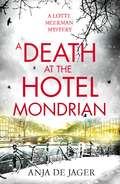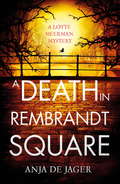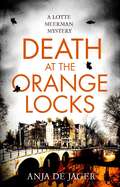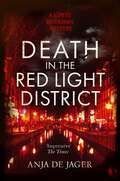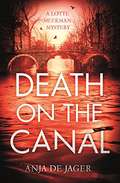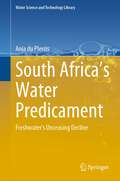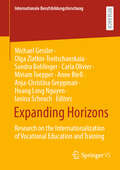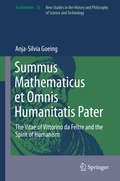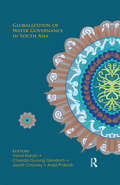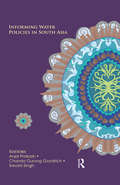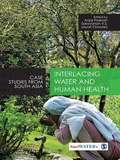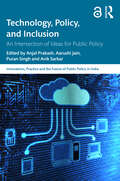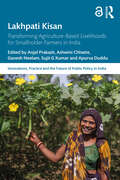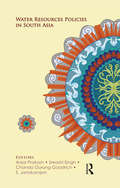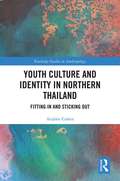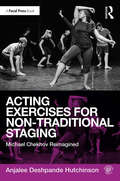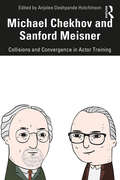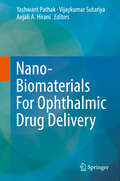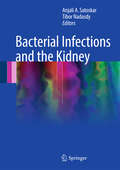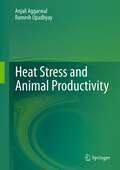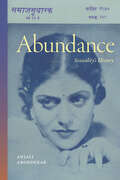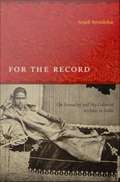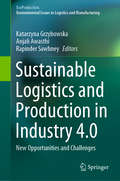- Table View
- List View
A Death at the Hotel Mondrian (Lotte Meerman #5)
by Anja de Jager'A novel brilliantly evoking the isolation of a woman with an unbearable weight on her conscience'SUNDAY TIMES'Succeeds as a portrait of both a city and, in its heroine, a delightfully dysfunctional personality'SUNDAY EXPRESS__________When Lotte Meerman is faced with the choice of interviewing the latest victim in a string of assaults or talking to a man who claims he really isn't dead, she picks the interview. After all, the man cannot possibly be who he claims he is: Andre Nieuwkamp was murdered as a teenager over thirty years ago, and it had been a police success story nationwide when the skeletal remains found in the dunes outside Amsterdam had been identified, and the murderer subsequently arrested.Yet concerned about this encounter, Lotte goes to the Hotel Mondrian the next day to talk to the man, but what she finds is his corpse. And his passport shows that he wasn't Andre Nieuwkamp as he said, but Theo Brand, a British citizen. Subsequent DNA tests reveal that the man was Andre Nieuwkamp so now Lotte has a double mystery on her hands and needs to figure out not only why Andre waited so long to tell anyone he was still alive, but also who was the teenager murdered in the dunes all those decades ago.___________Praise for Anja de Jager'An impressive debut . . . De Jager is as good on dodgy family relations as she is on police procedure'The Times'Detective Lotte Meerman is damaged by her past and tortured by the dreadful mistake she's made at work . . . Amsterdam in the vicious grip of a bitter winter is the other star here, beautiful and deadly' Cath Staincliffe'A tightly written, cleverly plotted whodunit that keeps the reader guessing almost to the last page' Irish Examiner''de Jager manages to circumvent the overfamiliar. The evocation of a bitterly cold Amsterdam is worthy of Nicholas Freeling's Van der Valk books' The Independent
A Death in Rembrandt Square (Lotte Meerman #4)
by Anja de JagerGuilty until proven innocent . . .It's hard for anyone to have their work scrutinised in public. For Amsterdam-based detective Lotte Meerman, listening to the Right to Justice podcast as they dissect one of her old cases is made even more harrowing as every episode makes fresh accusations of a bungled operation.As the podcast reveals hidden facts about the arrest of Ruud Klaver, the one thing Lotte is still convinced of is that it was Ruud who was guilty of the murder of a student near Rembrandt Square ten years earlier. However, when Ruud Klaver then dies in suspicious circumstances, only hours after the final podcast proving his innocence is broadcast, Lotte has to accept that maybe she was wrong.With the dead man's family passionately against her inclusion in the investigation into his death, the only way for Lotte to discover who killed him is by finding out where she went wrong all those years ago - if indeed she did go wrong. As Lotte digs deeper and involves colleagues from her past, it starts to look like the murder in Rembrandt Square was part of an even bigger deception . . .Praise for Anja de Jager'Captures the feel of Amsterdam . . . entirely convincing' Daily Mail'. . . a novel brilliantly evoking the isolation of a woman with an unbearable weight on her conscience'Sunday Times'The book succeeds as a portrait of both a city and, in its heroine, a delightfully dysfunctional personality'Sunday Express'An impressive debut . . . De Jager is as good on dodgy family relations as she is on police procedure'The Times'Detective Lotte Meerman is damaged by her past and tortured by the dreadful mistake she's made at work . . . Amsterdam in the vicious grip of a bitter winter is the other star here, beautiful and deadly' Cath Staincliffe
Death at the Orange Locks
by Anja de Jager'A novel brilliantly evoking the isolation of a woman with an unbearable weight on her conscience' Sunday Times __________________Keeping it in the family...After her painful divorce four years ago, Lotte Meerman has kept well away from Arjen, her ex-husband, and his new wife Nadia. So when they both visit her at central Amsterdam's police station to report Nadia's father missing, Lotte is shocked - but hides it well.Then two days later a dog walker reports the discovery of a body near the Orange Locks, built to keep the sea out of Amsterdam, and the missing man is identified as Nadia's father. Lotte wants to stay away from the investigation but his widow, Margreet, keeps searching her out as she has no idea it was her daughter who was pivotal in the marriage break-up. She wrongly identifies Lotte as a friend and tells her that Patrick had been a great husband and father, and a successful businessman. But when Lotte digs into Patrick's past, she discovers instead a failing company and a man with a history of making unwanted sexual advances to his female employees.Margreet is unaware of any of this. And the more Lotte investigates the dead man's past, the more she finds to suggest that her ex-husband is somehow involved in his death...______________________Praise for Anja de Jager:'Succeeds as a portrait of both a city and, in its heroine, a delightfully dysfunctional personality'Sunday Express'Impressive' The Times
Death at the Orange Locks (Lotte Meerman #6)
by Anja de Jager'A novel brilliantly evoking the isolation of a woman with an unbearable weight on her conscience' Sunday Times __________________Keeping it in the family...After her painful divorce four years ago, Lotte Meerman has kept well away from Arjen, her ex-husband, and his new wife Nadia. So when they both visit her at central Amsterdam's police station to report Nadia's father missing, Lotte is shocked - but hides it well.Then two days later a dog walker reports the discovery of a body near the Orange Locks, built to keep the sea out of Amsterdam, and the missing man is identified as Nadia's father. Lotte wants to stay away from the investigation but his widow, Margreet, keeps searching her out as she has no idea it was her daughter who was pivotal in the marriage break-up. She wrongly identifies Lotte as a friend and tells her that Patrick had been a great husband and father, and a successful businessman. But when Lotte digs into Patrick's past, she discovers instead a failing company and a man with a history of making unwanted sexual advances to his female employees.Margreet is unaware of any of this. And the more Lotte investigates the dead man's past, the more she finds to suggest that her ex-husband is somehow involved in his death...______________________Praise for Anja de Jager:'Succeeds as a portrait of both a city and, in its heroine, a delightfully dysfunctional personality'Sunday Express'Impressive' The Times
Death in the Red Light District (Lotte Meerman #10)
by Anja de JagerAMSTERDAM 1980A city in turmoil: rife with drug abuse, riots and terror threats in the run-up to the coronation of Queen Beatrix. As Amsterdam's police force is overwhelmed by the civil war between law enforcement and squatters, local neighbourhood policeman Piet Huizen is seconded from his hometown Alkmaar to this cauldron. It should be daunting but he feels strangely liberated from the responsibilities of home and everyday work. Together with his three colleagues from across the country, he's only there temporarily and can even laugh at his own provincial outlook. Until a student goes missing.AMSTERDAM NOWDetective Lotte Meerman doesn't want to hear about her father Piet Huizen's past because his month in Amsterdam in 1980 led directly to her parent's divorce. The less she knows, the better it is. Then two men die. Their deaths are not treated as suspicious but Lotte realises there is something that links the deceased men: they were both children of her father's former team-mates. And the more she investigates the circumstances of their deaths, the more Lotte comes to realise that she could be next on the list...Praise for Anja de Jager:'Succeeds as a portrait of both a city and, in its heroine, a delightfully dysfunctional personality' Sunday Express'Impressive' The Times
Death in the Red Light District (Lotte Meerman #10)
by Anja de JagerAMSTERDAM 1980A city in turmoil: rife with drug abuse, riots and terror threats in the run-up to the coronation of Queen Beatrix. As Amsterdam's police force is overwhelmed by the civil war between law enforcement and squatters, local neighbourhood policeman Piet Huizen is seconded from his hometown Alkmaar to this cauldron. It should be daunting but he feels strangely liberated from the responsibilities of home and everyday work. Together with his three colleagues from across the country, he's only there temporarily and can even laugh at his own provincial outlook. Until a student goes missing.AMSTERDAM NOWDetective Lotte Meerman doesn't want to hear about her father Piet Huizen's past because his month in Amsterdam in 1980 led directly to her parent's divorce. The less she knows, the better it is. Then two men die. Their deaths are not treated as suspicious but Lotte realises there is something that links the deceased men: they were both children of her father's former team-mates. And the more she investigates the circumstances of their deaths, the more Lotte comes to realise that she could be next on the list...Praise for Anja de Jager:'Succeeds as a portrait of both a city and, in its heroine, a delightfully dysfunctional personality' Sunday Express'Impressive' The Times
Death on the Canal (Lotte Meerman #3)
by Anja de Jager'. . . a novel brilliantly evoking the isolation of a woman with an unbearable weight on her conscience' Sunday TimesWhere do your loyalties lie? With the truth or with your colleagues?Drinking outside a canal-side bar on a perfect summer's evening, Lotte is witness to the fatal stabbing of Piotr Mazur, a Polish security guard working in one of the city's department stores. As Lotte starts to investigate Mazur's death, all the facts point to him being a small-time drug dealer, and his murder is treated as a minor complication in another team's larger narcotics case. Yet Lotte remains unconvinced; having viewed the man's ordered, unchaotic flat and spoken to his colleagues, she can't help but believe he was being set up.And in the bar, moments before Piotr was killed, Lotte saw a woman pass him a photo of a child. Shebecomes convinced that his death wasn't a revenge-killing over drugs at all, and has to now think carefully about what to do for the best, especially as key evidence in Mazur's murder comes from someone she knows she cannot trust. Praise for Anja de Jager'An absorbing read with the smack of reality' Daily Mail'The book succeeds as a portrait of both a city and, in its heroine, a delightfully dysfunctional personality'Sunday Express'Impressive . . . De Jager is as good on dodgy family relations as she is on police procedure'The Times'Detective Lotte Meerman is damaged by her past and tortured by the dreadful mistake she's made at work . . . Amsterdam is the other star here, beautiful and deadly' Cath Staincliffe
South Africa’s Water Predicament: Freshwater’s Unceasing Decline (Water Science and Technology Library #101)
by Anja du PlessisThe book provides a critical evaluation of South Africa’s freshwater resources to illustrate the way in which its freshwater resources, water access, services and infrastructure have continued to decline over the past three decades. The continued decline of water governance, management, water service delivery, dilapidated water infrastructure, dysfunctional local governments and overall excessive water degradation is illustrated and emphasized using real-life examples and case studies from various contexts within the country.The main argument of the book is that South Africa’s freshwater resources have declined to such an extent that it can be described as a predicament. Questionable water governance decisions and reactive water management practices have led to no improvement and/or increased degradation of freshwater resources. An overall lack of service delivery exists across the country, in various contexts, leading to further water and social decline.An inter-disciplinary evaluation of South Africa’s current water predicament is provided, major water crises are prioritized, and suitable recommendations are given to transform its predicament into problems which can be addressed. Suitable background information is given to emphasize the necessity of good water governance, management, and service delivery. South Africa’s freshwater resources are evaluated with specific focus on the decline of informed water governance, management, service delivery and water quality. Factors requiring urgent attention are determined and suitable recommendations and/or actions are provided.An evaluation and overall synthesis focused on the transformation of the predicament into problems is provided. Primary water problems are prioritized according to urgency and suitable recommendations are given to assist in transforming the country’s current complex water predicament into “simpler” water problems. Political will, collaboration with researchers, stakeholders, non-governmental organizations, and cooperation of civil society is required.South Africa’s already scarce freshwater resources and decaying infrastructure will persist and possibly collapse if no major actions or interventions are implemented.
Expanding Horizons: Research on the Internationalization of Vocational Education and Training (Internationale Berufsbildungsforschung)
by Olga Zlatkin-Troitschanskaia Miriam Toepper Sandra Bohlinger Michael Gessler Carla Olivier Anne Bieß Anja-Christina Greppmair Hoang Long Nguyen Ianina ScheuchThis volume presents selected results from the initiative "Research on the Internationalization of Vocational Education and Training", funded by the German Federal Ministry of Education and Research. The articles show how the projects of the funding program contribute to strengthening and expanding institutionalized vocational education and training research as well as international vocational education and training cooperation. The altogether 35 authors outline and discuss research findings as well as innovative models and ideas for development perspectives.
Summus Mathematicus et Omnis Humanitatis Pater
by Anja-Silvia GoeingThis book revises the picture of the teacher and educator of princes, Vittorino Rambaldoni da Feltre (c. 1378, Feltre -- 1446, Mantua), taking a completely new approach to show his work and life from the individual perspectives created by his students and contemporaries. From 1423 to 1446, Vittorino da Feltre was in charge of a school in Mantua, where his students included not only the offspring of Italy's princes, but also the first generation of authors dealing with books in print. Among his students were historians like Bartolomeo Sacchi (named Platina), who wrote an extensive history of the popes, and mathematicians like Jacopo Cassiano (Cremonensis), who translated the work of Archimedes from Greek into Latin. Vittorino is still regarded as the educationalist of Italian Renaissance humanism per sé. This work not only contributes to the study of the history of Italian humanist institutions, it also uses available sources to demonstrate the development of a new attitude to education in Italy.
Globalization of Water Governance in South Asia
by Jayati Chourey Anjal Prakash Vishal Narain Chanda Gurung GoodrichGlobalization has significantly redefined the nature of governance in the water sector. Non-state actors—multilateral and transnational donor agencies and corporations, non-government organizations, markets, and civil society at large—are assuming a bigger role in public policy-making for water resource management. New discourses on neoliberalism, integrated water resource management (IWRM), public–private partnerships, privatization, and gender equity have come to influence water governance. Drawing upon detailed case studies from India, Bangladesh, Nepal, Sri Lanka, and Bhutan, this volume shows the implications of these new global paradigms for water allocation and management practices, institutions and governance structures in South Asia. It suggests that, despite claims to the contrary, they have done little to further human well-being, reduce gender disparity, or improve accountability and transparency in the system. Steering away from blueprint approaches, it argues for a more nuanced and contextual understanding of water management challenges, based on local knowledge and initiatives. This book will be useful to those interested in political economy and water governance, natural resource management, environmental studies, development studies, and public administration, as well as to water professionals, policy-makers and civil society activists.
Informing Water Policies in South Asia
by Anjal Prakash Chanda Gurung Goodrich Sreoshi SinghThis book analyzes water policies in South Asia from the perspective of Integrated Water Resources Management (IWRM). It seeks to address the problems of water scarcity, conflict and pollution resulting from the gross mismanagement and over-exploitation of this finite resource. Highlighting the need for IWRM in mitigating abuse and ensuring sustainable use, it discusses issues relating to groundwater management; inter-state water conflicts; peri-urban water use; local traditional water management practices; coordination between water users and uses; and water integration at the grassroots level. With case studies from India, Bangladesh, Pakistan, and Nepal, the innovative, painstaking and transnational researches presented in the volume deal with questions of equity, gender, sustainability, and democratic governance in water policy interventions. It will interest researchers and students of development studies, environmental studies, natural resource management, water governance, and public administration, as also water sector professionals, policymakers, civil society activists and governmental and nongovernmental organizations.
Interlacing Water and Human Health
by Jayati Chourey Anjal Prakash Saravanan V SAn increasing recognition of the need to understand the complex systems in the health sector has raised the demand for an examination of water and health from a systemic perspective. Analyzing the various discourses on the subject, the volume revolves around this central question: What are the linkages between water and health in South Asia? The interlacing of water and health exists wherever human health is adversely affected, directly or indirectly, by changes in the quality and quantity of water. These adverse effects are linked with poverty, environment, and infrastructure in the overall socio-political and economic-developmental context. The book looks at the linkage between water and health in an integrated manner, and is not based on the 'absence of disease' syndrome. The curative, preventive, and adaptive aspects of the public-health problem have also been delved into. Among other areas, the articles deal with water and health with reference to water supply, sanitation, water pollution, natural disasters, urbanization, and industrialization. Armed with the latest research and case studies from South Asia, the book calls for a comprehensive understanding and better integration of water and health issues in the region. Interlacing Water and Human Health is the third volume in the Water in South Asia Series published by SAGE and South Asia Consortium for Interdisciplinary Water Resources Studies (SaciWATERs).
Technology, Policy, and Inclusion: An Intersection of Ideas for Public Policy (Innovations, Practice and the Future of Public Policy in India)
by Anjal Prakash, Aarushi Jain, Puran Singh, and Avik SarkarTechnology, Policy, and Inclusion looks at the intersections between public policy and technology in India. It explores the barriers in instituting effective governance and development and examines how these can be mitigated through technological interventions in developing countries. Increased digitisation of the economy has added to the development challenges in India and issues such as exclusion and social inequality. This volume stresses the need for governments to leverage technology to bring more vulnerable and marginalised groups into the fold of financial and social inclusion. It also focuses on the importance of regulation for a responsible integration of technologies and minimising risks. The book includes examples and case studies from different areas including management of the COVID-19 pandemic through digital means, real estate digital infrastructure, digital census, e-markets for farmers, and government interventions that use technology to deliver financial services in remote areas of the country. It also outlines various solutions for fostering equity and socio-economic development. Part of the Innovations, Practice and the Future of Public Policy in India series, this volume will be of interest to students and researchers of public policy, political science, development studies, and sociology as well as policy professionals and technocrats. This book is freely available as a downloadable Open Access PDF at http://www.taylorfrancis.com under a Creative Commons (CC-BY-NC-ND) 4.0 license.
Lakhpati Kisan: Transforming Agriculture-Based Livelihoods for Smallholder Farmers in India (Public Policy in India)
by Anjal Prakash, Ashwini Chhatre, Ganesh Neelam, Sujit G Kumar and Apurva DudduAgriculture plays an essential role in the growth of developing economies, as agricultural production is key to food security and is closely intertwined with the livelihoods of many. This book explores the lives of smallholder agricultural farmers in India and the dire challenges that agricultural households face.Focussing on the Lakhpati Farmers initiative, the book examines interventions made by the programme to economically empower farmers and accelerate income growth in the agriculture sector. The programme, initiated by the Collectives for Integrated Livelihood Initiatives (CInI) in the tribal belts of central Indian states, helped farmers earn over INR 100,000 (or one lakh – hence Lakhpati) per annum. The programme engaged with households in 12 districts across 4 states – Jharkhand, Odisha, Maharashtra, and Gujarat – to bring about change through economic empowerment and improve the quality of life of tribal communities. This book documents these initiatives and strategies to meet the aspirations of small and marginal farmers by understanding the ingredients, processes, and challenges involved. The book analyses the programme, examines case studies, and offers ways forward.Part of the Innovations, Practice and the Future of Public Policy in India series, this volume will interest students and researchers of agriculture and rural development, business management, governance, public policy, development studies, and sociology.This book is freely available as a downloadable Open Access PDF at http://www.taylorfrancis.com under a Creative Commons (CC-BY-NC-ND) 4.0 license.
Water Resources Policies in South Asia
by Anjal Prakash; Sreoshi Singh; Chanda Gurung Goodrich; S. JanakarajanFalling or stagnant agricultural growth, increasing dependence on groundwater, climate variability, swift industrialization, and unplanned and unregulated urbanization in South Asia have spawned a variety of challenges for water resources governance, management and use: groundwater overdraft; insufficient, ill-managed and poor-quality freshwater supply vis-à-vis escalating demand; and water pollution. Water policies in each of the South Asian countries thus call for a more holistic understanding for the efficient management, equitable distribution and sustainable use of this scarce resource.Analyzing the economic, demographic and ideological context in which water policies are framed and implemented, this book argues for an integrated framework in formulating and implementing water policies in South Asia. It also highlights some common missing links in the national policies: problems of techno-centric and blueprint approach to water management, growing influence of international donor agencies and inadequate concern for issues such as equity, sustainability, gender sensitivity, accountability, regional diversity in property rights regimes and water management practices, and regional conflicts over water access. The innovative and nuanced knowledge on water resources produced from detailed case studies in India, Bangladesh, Bhutan, Nepal, Pakistan and Sri Lanka will be useful for professionals, academics, policymakers and activists as well as those in development studies, environmental studies, natural resource management and public administration.
Youth Culture and Identity in Northern Thailand: Fitting In and Sticking Out (Routledge Studies in Anthropology)
by Anjalee CohenYouth Culture and Identity in Northern Thailand examines how young people in urban Chiang Mai construct an identity at the intersection of global capitalism, state ideologies, and local culture. Drawing on over 15 years of ethnographic research, the book explores the impact of rapid urbanisation and modernisation on contemporary Thai youth, focusing on conspicuous youth subcultures, drug use (especially methamphetamine use), and violent youth gangs. Anjalee Cohen shows how young Thai people construct a specific youth identity through consumerism and symbolic boundaries – in particular through enduring rural/urban distinctions. The suggestion is that the formation of subcultures and “deviant” youth practices, such as drug use and violence, are not necessarily forms of resistance against the dominant culture, nor a pathological response to dramatic social change, as typically understood in academic and public discourse. Rather, Cohen argues that such practices are attempts to “fit in and stick out” in an anonymous urban environment. This volume is relevant to scholars in Thai Studies, Southeast Asian Studies, Anthropology, Sociology, Urban Studies, and Development Studies, particularly those with an interest in youth, drugs, and gangs.
Acting Exercises for Non-Traditional Staging: Michael Chekhov Reimagined
by Anjalee Deshpande HutchinsonActing Exercises for Non-Traditional Staging: Michael Chekhov Reimagined offers a new set of exercises for coaching actors when working on productions that are non-traditionally staged in arenas, thrusts, or alleys. All of the exercises are adapted from Michael Chekhov's acting technique, but are reimagined in new and creative ways that offer innovative twists for the practitioner familiar with Chekhov, and easy accessibility for the practitioner new to Chekhov. Exploring the methodology through a modern day lens, these exercises are energizing additions to the classroom and essential tools for more a vibrant rehearsal and performance.
Michael Chekhov and Sanford Meisner: Collisions and Convergence in Actor Training
by Anjalee Deshpande HutchinsonMichael Chekhov and Sanford Meisner: Collisions and Convergence in Actor Training offers a comprehensive analysis of the Sanford Meisner Acting Technique in comparison to the Michael Chekhov Acting Technique. This compilation reveals the connections as well as the contradictions between these two very different approaches, while highlighting meaningful bridges and offering in-depth essays from a variety of sources, including master teachers with years of experience and new and rising stars in the field. The authors provide philosophical arguments on actor training, innovative approaches to methodology, and explorations into integration, as well as practical methods of application for the classroom or rehearsal room, or scaffolded into a curriculum. Michael Chekhov and Sanford Meisner: Collisions and Convergence in Actor Training is an excellent resource for professors teaching Introductory, Intermediate or Advanced Acting Technique as well as acting program directors and department chairs seeking new, impactful research on actor training.
Nano-Biomaterials For Ophthalmic Drug Delivery
by Yashwant Pathak Vijaykumar Sutariya Anjali A. HiraniThis consolidated reference book addresses the various aspects of nano biomaterials used in ophthalmic drug delivery, including their characterization, interactions with ophthalmic system and applications in treatments of the ophthalmic diseases and disorders. In the last decade, a significant growth in polymer sciences, nanotechnology and biotechnology has resulted in the development of new nano- and bioengineered nano-bio-materials. These are extensively explored as drug delivery carriers as well as for implantable devices and scaffolds. At the interface between nanomaterials and biological systems, the organic and synthetic worlds merge into a new science concerned with the safe use of nanotechnology and nano#65533; material design for biological applications. For this field to evolve, there is a need to understand the dynamic forces and molecular components that shape these interactions. While it is impossible to describe with certainty all the bio#65533; physicochemical interactions at play at the interface, we are at a point where the pockets of assembled knowledge are providing a conceptual framework to guide this exploration, and review the impact on future product development. The book is intended as a valuable resource for academics and pharmaceutical scientists working in the field of polymers, polymers materials for drug delivery, drug delivery systems and ophthalmic drug delivery systems, in addition to medical and health care professionals in these areas.
Bacterial Infections and the Kidney
by Anjali A. Satoskar Tibor NadasdyThis text is designed to present a comprehensive and state-of the-art but practical approach to the diagnosis and management of bacterial infection associated renal disease. The chapters address the different types of glomerular, tubulointerstitial and vascular diseases, associated with bacterial infections, describe diagnostic pitfalls, provide differential diagnosis and discuss treatment and management. Easy to follow diagnostic algorithms and tables are included for practical usefulness. The text provides a large number of color microphotographs, illustrations and each chapter refers to the most important up to date literature in the area. All chapters are written by experts in the field and will include the most up-to-date clinical information. A comprehensive but user friendly resource on renal complications of bacterial infection, such as this book, is overdue, particularly now in the era of staphylococcus epidemic and emerging new resistant bacterial strains. Bacterial Infections and the Kidney will be an important resource for pathologists, nephrologists, general internists, infectious disease specialists, and urologists. Transplant surgeons may find the chapter on transplant pyelonephritis very useful.
Heat Stress and Animal Productivity
by Anjali Aggarwal Ramesh UpadhyayDr. Anjali Aggarwal is working as a Senior Scientist at National Dairy Research Institute, Karnal (India). She holds a PhD degree in Animal Physiology and is involved in research and teaching at post-graduate level. Her area of research work is stress and environmental physiology. She has more than 50 publications, two technical bulletins, four manuals and many book chapters to her credit. She has successfully guided many post-graduate and PhD students. Her major research accomplishments are on microclimatic modification for alleviation of heat and cold stress, mist and fan cooling systems for cows and buffaloes, and use of wallowing tank in buffaloes. Her work involves the use of technology of supplementing micronutrients during dry period and early lactation to crossbred and indigenous cows for alleviating metabolic and oxidative stress and improved health and productivity. Studies are also done in her lab on partitioning of heat loss from skin and pulmonary system of cattle and buffaloes as a result of exercise or exposure to heat stress. Dr. R.C. Upadhyay is working as Head, Dairy Cattle Physiology Division at National Dairy Research Institute, Karnal (India). He graduated in Veterinary Sciences and obtained his PhD degree in Animal Physiology. His area of recent research is climate change, stress, and environmental physiology. His major research accomplishment is on climate change impact assessment of milk production and growth in livestock. His work also involves studying methane conversion and emission factors for Indian livestock and use of IPCC methodology of methane inventory of Indian livestock. Heat shock protein-70 expression studies in cattle and buffaloes are also done in his lab. Draught animal power evaluation, fatigue assessment, work-rest cycle and work limiting factors form the highlights of his work. Studies on partitioning of heat loss from skin and pulmonary system of cattle and buffaloes and electrocardiographic studies in cattle, buffalo, sheep and goat are also undertaken in his lab. He has more than 75 research papers, four books and several book chapters to his credit. Technologies developed and research done by him include methodology of methane measurement: open and closed circuit for cattle and buffaloes; inventory of methane emission from livestock using IPCC methodology; livestock stress index: thermal stress measurement based on physiological functions; and draught power evaluation system and large animal treadmill system. He received training in Radio-nuclides in medicine at Australian School of Nuclear Technology, Lucas heights, NSW, Australia in 1985 and Use of radioisotopes in cardiovascular investigations at CSIRO, Prospect, NSW, Australia, during 1985-86. He has guided several post-graduate and PhD students. He is recipient of Hari Om Ashram Award-1990 (ICAR) for outstanding research in animal sciences.
Abundance: Sexuality’s History (Theory Q)
by Anjali ArondekarIn Abundance, Anjali Arondekar refuses the historical common sense that archival loss is foundational to a subaltern history of sexuality, and that the deficit of our minoritized pasts can be redeemed through acquisitions of lost pasts. Instead, Arondekar theorizes the radical abundance of sexuality through the archives of the Gomantak Maratha Samaj—a caste-oppressed devadasi collective in South Asia—that are plentiful and quotidian, imaginative and ordinary. For Arondekar, abundance is inextricably linked to the histories of subordinated groups in ways that challenge narratives of their constant devaluation. Summoning abundance over loss upends settled genealogies of historical recuperation and representation and works against the imperative to fix sexuality within wider structures of vulnerability, damage, and precarity. Multigeneric and multilingual, transregional and historically supple, Abundance centers sexuality within area, post/colonial, and anti/caste histories.
For the Record: On Sexuality and the Colonial Archive in India
by Anjali ArondekarAnjali Arondekar considers the relationship between sexuality and the colonial archive by posing the following questions: Why does sexuality (still) seek its truth in the historical archive? What are the spatial and temporal logics that compel such a return? And conversely, what kind of "archive" does such a recuperative hermeneutics produce? Rather than render sexuality's relationship to the colonial archive through the preferred lens of historical invisibility (which would presume that there is something about sexuality that is lost or silent and needs to "come out"), Arondekar engages sexuality's recursive traces within the colonial archive against and through our very desire for access. The logic and the interpretive resources of For the Record arise out of two entangled and minoritized historiographies: one in South Asian studies and the other in queer/sexuality studies. Focusing on late colonial India, Arondekar examines the spectacularization of sexuality in anthropology, law, literature, and pornography from 1843 until 1920. By turning to materials and/or locations that are familiar to most scholars of queer and subaltern studies, Arondekar considers sexuality at the center of the colonial archive rather than at its margins. Each chapter addresses a form of archival loss, troped either in a language of disappearance or paucity, simulacrum or detritus: from Richard Burton's missing report on male brothels in Karchi (1845) to a failed sodomy prosecution in Northern India, Queen Empress v. Khairati (1884), and from the ubiquitous India-rubber dildos found in colonial pornography of the mid-to-late nineteenth century to the archival detritus of Kipling's stories about the Indian Mutiny of 1857.
Sustainable Logistics and Production in Industry 4.0: New Opportunities and Challenges (EcoProduction)
by Katarzyna Grzybowska Anjali Awasthi Rapinder SawhneyThis book proposes essential methods, models, and case studies for Sustainable Logistics and Production in Industry 4.0. In addition to identifying and discussing various challenges and future prospects, it also features numerous case studies and quantitative research from different sectors. The authors (which include academics and managers) present insightful tips on the technical, organizational and social aspects of implementing Sustainable Logistics and Production in Industry 4.0. In today’s world, changes are coming faster and more unpredictably. Production is becoming more automated, computerized and complex. In short, Industry 4.0 is creating many new opportunities, but at the same time several new challenges. This book offers a valuable resource for all academics and practitioners who want to deepen their knowledge of Sustainable Logistics and Production in Industry 4.0.
